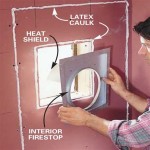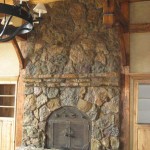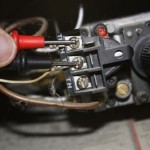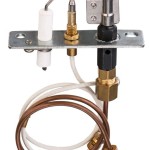How to Clean a Fireplace Hearth Effectively
A fireplace hearth, the non-combustible flooring immediately surrounding a fireplace, serves a critical function as a safety barrier, protecting the surrounding floor from stray sparks and embers. However, its proximity to the fire also makes it susceptible to accumulating soot, ash, creosote, and other debris. Regular cleaning is essential not only for maintaining the aesthetic appeal of the hearth but also for preventing potential fire hazards and ensuring a healthy indoor environment. The method of cleaning depends largely on the material of the hearth, which can range from brick and stone to tile and concrete.
Preparing for the Cleaning Process
Before commencing the cleaning of a fireplace hearth, certain preparatory steps are crucial. The first step involves allowing the fireplace to cool completely. Do not attempt to clean a warm or hot hearth, as this poses a burn risk and can damage cleaning agents. Once the fireplace has cooled, gather the necessary cleaning supplies. These may include a broom, dustpan, vacuum cleaner with a hose attachment, a scrub brush, sponges, buckets, cleaning solutions suitable for the hearth material, and personal protective equipment such as gloves and safety glasses.
Protecting the surrounding area is equally important. Lay down drop cloths or old towels around the hearth to prevent cleaning solutions or dislodged debris from staining or damaging nearby flooring or furniture. Ensure adequate ventilation by opening windows or doors, as some cleaning solutions can emit fumes. A well-ventilated space minimizes the risk of inhaling potentially harmful substances. Once preparations are complete, the actual cleaning process can begin.
The initial step in the cleaning process is to remove loose debris. Use a broom and dustpan to sweep up loose ash, soot, and any larger particles from the hearth surface. A vacuum cleaner with a hose attachment can be used to reach into crevices and remove finer debris that the broom may miss. This step is crucial as it prevents the loose debris from mixing with cleaning solutions, which can create a muddy mess and make cleaning more difficult.
Cleaning Different Hearth Materials
The appropriate cleaning method and cleaning solutions vary depending on the material of the fireplace hearth. Using the wrong cleaning agent can damage the surface or alter its appearance. Therefore, identifying the type of hearth material is paramount before proceeding.
Brick Hearths: Brick hearths are porous and can easily absorb stains. Begin by thoroughly saturating the brick with water. This pre-wetting process helps to prevent the cleaning solution from being absorbed into the brick. Next, prepare a cleaning solution of trisodium phosphate (TSP) diluted in water according to the manufacturer's instructions. TSP is a powerful degreaser and cleaner, effective for removing soot and creosote. Apply the solution to the brick surface with a scrub brush, working in circular motions. Allow the solution to sit for several minutes to loosen the grime. Rinse the brick thoroughly with clean water to remove all traces of the TSP. For stubborn stains, a poultice made of baking soda and water can be applied to the affected area and left to dry before being scraped away. After cleaning, consider applying a sealant specifically designed for brick to protect the surface from future stains.
Stone Hearths: Natural stone hearths, such as granite, marble, or slate, require gentle cleaning solutions to avoid damage. Avoid using acidic cleaners like vinegar or lemon juice, as they can etch the stone surface. Instead, opt for a pH-neutral stone cleaner or a mild dish soap diluted in water. Apply the solution to the stone surface with a soft cloth or sponge, gently wiping away dirt and grime. Rinse thoroughly with clean water and dry with a clean cloth. For stubborn stains, a stone-specific stain remover can be used, but always test the product in an inconspicuous area first to ensure it does not discolor the stone. Regularly sealing the stone hearth helps to prevent stains and makes cleaning easier.
Tile Hearths: Tile hearths are generally easier to clean than brick or stone. A solution of warm water and mild dish soap is often sufficient for removing most dirt and grime. Apply the solution to the tile surface with a sponge or cloth, wiping away any stains or debris. Pay particular attention to the grout lines, as they tend to accumulate dirt and mildew. Use a grout brush to scrub the grout lines with a solution of baking soda and water or a commercially available grout cleaner. Rinse the tile thoroughly with clean water and dry with a clean cloth. For tougher stains, a solution of diluted bleach can be used, but ensure adequate ventilation and wear gloves to protect the skin.
Concrete Hearths: Concrete hearths are durable but can be porous. Similar to brick, they can absorb stains. A mixture of warm water and a concrete cleaner is recommended. Apply the cleaner to the concrete surface and scrub thoroughly with a stiff-bristled brush. Rinse well with clean water. For oil-based stains, degreasers may be needed. After cleaning, consider sealing the concrete hearth to prevent future staining and make maintenance easier.
Addressing Stubborn Stains and Maintaining the Hearth
Despite regular cleaning, stubborn stains may occasionally persist on the fireplace hearth. Specific stain removal techniques can be employed based on the type of stain and the hearth material. For soot stains on brick, a poultice of baking soda and water can be applied to the stained area and left to dry before being scraped away. For creosote stains, a commercially available creosote remover specifically designed for fireplace hearths may be necessary.
Oil-based stains on stone or concrete can be treated with a degreaser or a poultice of diatomaceous earth and a solvent like mineral spirits. The poultice is applied to the stain, covered with plastic wrap, and left to sit for several hours to absorb the oil. The poultice is then scraped away, and the area is cleaned with a mild detergent.
Maintaining the fireplace hearth involves regular cleaning and preventative measures. Sweep or vacuum the hearth regularly to remove loose debris and prevent the buildup of soot and ash. Promptly address any spills or stains to prevent them from setting. Consider using a fireplace screen to contain sparks and embers and minimize the amount of debris that falls onto the hearth. Periodically inspect the hearth for cracks or damage and repair them promptly to prevent further deterioration. Sealing the hearth surface, especially for porous materials like brick and stone, provides a protective barrier against stains and makes cleaning easier. By implementing these maintenance practices, the fireplace hearth can remain clean, safe, and aesthetically pleasing for years to come.

How To Clean A Fireplace Diy Basics

How To Clean Fireplace Bricks 9 Steps With S Wikihow

Best Way To Clean A Fireplace Stacy Risenmay

Fireplace Cleaning Tutorial Kippi At Home

How To Clean Fireplace Bricks 9 Steps With S Wikihow

How To Clean A Slate Hearth Regular Washing Stain Removal

How To Clean A Gas Fireplace The Proper Way

How To Clean A Fireplace Like Pro Housekeepers

How To Clean A Slate Hearth Regular Washing Stain Removal

How To Clean Brick Fireplaces Mantels Hearths And More My Space








